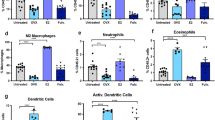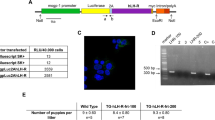Abstract
In order to study the growth kinetics of breast tumours during long-term hormonal withdrawal, we developed a transplantable, invasive mammary carcinoma EMR-86 that originated in a female WAG/Olac rat bearing a subcutaneously implanted oestrogen pellet (EP). Outgrowth of transplanted tumours occurs only in the presence of an EP, and metastases are formed in lungs and regional lymph nodes. Subsequent EP removal induces rapid regression. However, tumours do not disappear completely, as small nodules persist. These dormant tumour remnants can be restimulated even after long periods. Because EP-stimulated tumours regressed after treatment with bromocriptine and dormant tumours in non-oestrogenized rats grew out after treatment with perphenazine, prolactin is the major growth-stimulating hormone in this model. Cell kinetics in the growing, regressing and dormant phase were studied by immunocytochemical detection of DNA-incorporated bromodeoxyuridine (BrdUrd) in tissue sections. BrdUrd labelling indices decreased from 21.6 +/- 3.0% to less than 1% within 7 days after EP removal. After prolonged hormonal withdrawal (up to 90 days) BrdUrd-labelled tumour cells could always be demonstrated (range 0.4-0.8%), without a concomitant increase in tumour volume. Additional treatment either with bromocriptine or with ovariectomy could not significantly reduce this residual proliferative activity, as demonstrated by continuous BrdUrd labelling experiments. The results indicate that in vivo dormancy may represent a steady state of cell division and cell loss, rather than an accumulation of cells in a non-cycling G0 state.
This is a preview of subscription content, access via your institution
Access options
Subscribe to this journal
Receive 24 print issues and online access
$259.00 per year
only $10.79 per issue
Buy this article
- Purchase on Springer Link
- Instant access to full article PDF
Prices may be subject to local taxes which are calculated during checkout
Similar content being viewed by others
Author information
Authors and Affiliations
Rights and permissions
About this article
Cite this article
Wijsman, J., Cornelisse, C., Keijzer, R. et al. A prolactin-dependent, metastasising rat mammary carcinoma as a model for endocrine-related tumour dormancy. Br J Cancer 64, 463–468 (1991). https://doi.org/10.1038/bjc.1991.332
Issue Date:
DOI: https://doi.org/10.1038/bjc.1991.332
This article is cited by
-
Image-guided tumor resection using real-time near-infrared fluorescence in a syngeneic rat model of primary breast cancer
Breast Cancer Research and Treatment (2011)
-
Tumor dormancy and surgery-driven interruption of dormancy in breast cancer: learning from failures
Nature Clinical Practice Oncology (2007)
-
Time distribution of the recurrence risk for breast cancer patients undergoing mastectomy: Further support about the concept of tumor dormancy
Breast Cancer Research and Treatment (1996)
-
Preclinical models for the evaluation of targeted therapies of metastatic disease
Cell Biophysics (1994)



